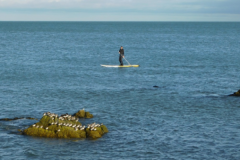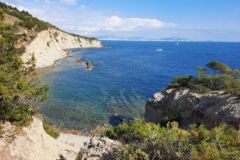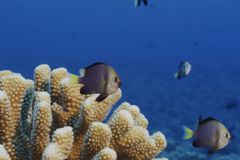35% of corals in danger on the Great Barrier Reef
After months of intensive aerial and underwater surveys, researchers from the Centre of Excellence for Coral Reef Studies (ARC) have released an initial estimate of the number of corals that have suffered severe bleaching. Coral reef scientists estimate that mass bleaching has killed 35% of corals in the northern and central Great Barrier Reef.
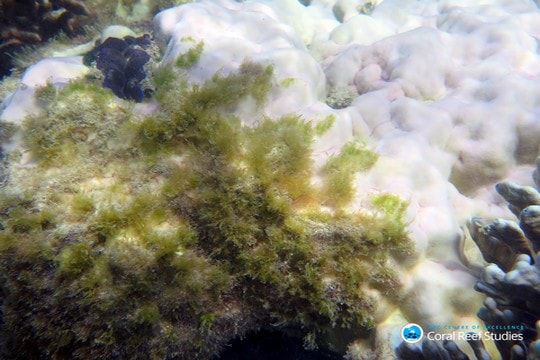
Dying coral colonized by Lizard Island algae, during the bleaching period. Credit: Dorothea Bender-Champ
"We found that, on average, 35% of the corals are already dead or dying on the 84 reefs we studied on the central and northern sections of the Great Barrier Reef, between Townsville and Papua New Guinea." explains Professor Terry Hughes, Director of the ARC at James Cook University (JCU).
95% of surviving corals south of Cairns
"Some reefs are in much better shape, particularly towards the south of Cairns, where average mortality is estimated at only 5%."
According to scientists, these more southerly reefs escaped this damage because the water temperatures there were closer to normal summer conditions.
"Fortunately, on the reefs south of Cairns, our underwater surveys have revealed that more than 95 percent of the corals have survived. And we expect these slightly bleached corals to return to their normal color over the next few months." explains Dr. Mia Hoogenboom, also of JCU.
80% of corals bleached in Western Australia
"In Western Australia, bleaching and mortality are also widespread and erratic. On the Kimberley coast where I work, up to 80 percent of corals are severely bleached, and at least 15 percent are already dead." explains Dr. Verena Schoepf from the University of Western Australia.
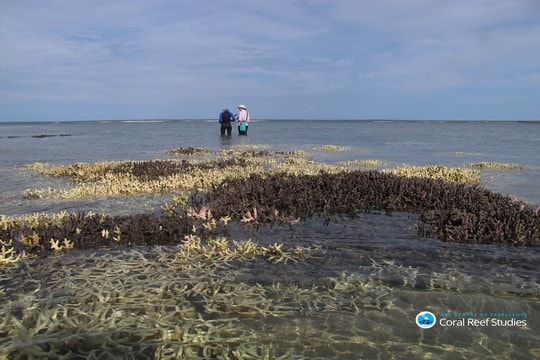
Researchers investigate coral bleaching in the shallow waters of Western Australia's Kimberley region - Credit: Chris Cornwall
Reducing greenhouse gases to save corals
"This is the third time in 18 years that the Great Barrier Reef has experienced mass bleaching due to global warming, and the current episode is much more extreme than what we have measured before. These three bleaching events have occurred each time the global temperature has increased by only 1°C since pre-industrial times. We need to rapidly reduce greenhouse gas emissions." continues the CRA director.
Coral bleaching occurs when environmental conditions are abnormal. Excessive sea temperature causes the expulsion of tiny photosynthetic algae, called "zooxanthellae", from corals. The loss of these algae causes the corals to discolor and bleach. But the good news is that these white corals can recover if the water temperature drops and the zooxanthellae return to colonize them. In which case they will die.
In addition to the mortality of many corals in the southern Great Barrier Reef, their reproduction is threatened. Bleaching stress is likely to temporarily slow their reproduction and growth rate.
"It is extremely important now to strengthen the resilience of coral reefs, and to maximize their natural ability to recover . But the reef is not as resilient as it was then and is struggling to cope with three bleaching events in just 18 years. Many coastal reefs, in particular, are now severely degraded "says Professor John Pandolfi of the ARC Centre in Queensland.
Researchers plan to re-survey these same reefs in the coming months to measure the final loss of corals, due to bleaching. Recovery of coral cover is expected to take a decade or more, but it will take much longer for the largest and oldest corals to be revived.
Before/After slider to see the effects of coral bleaching
First caption Before/After
Mature "stag horn" corals taken in 1996, at low tide, two years before the 1998 bleaching event, and again 20 years later (2016) at Orpheus Island, Great Barrier Reef - credit: ARC Centre of Excellence for Coral Reef Studies
Second legend Before/After
Mature "stag horn" corals at Lizard Island, Great Barrier Reef. Coral bleached in February 2016 and dead and overgrown with algae since April 2016 - credit: ARC Centre of Excellence for Coral Reef Studies

 /
/ 








